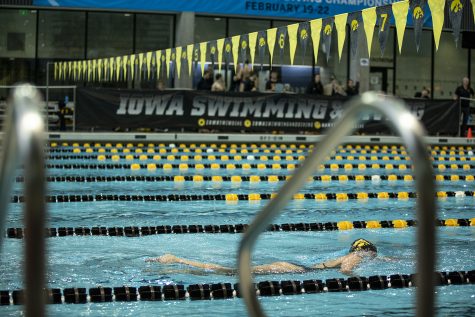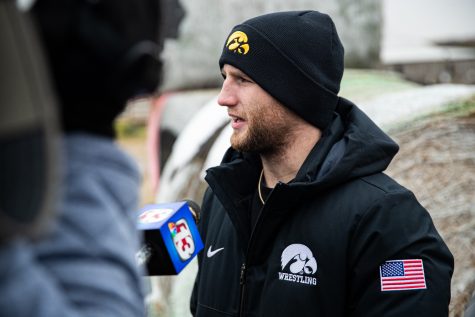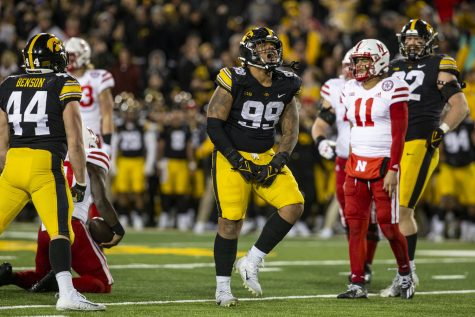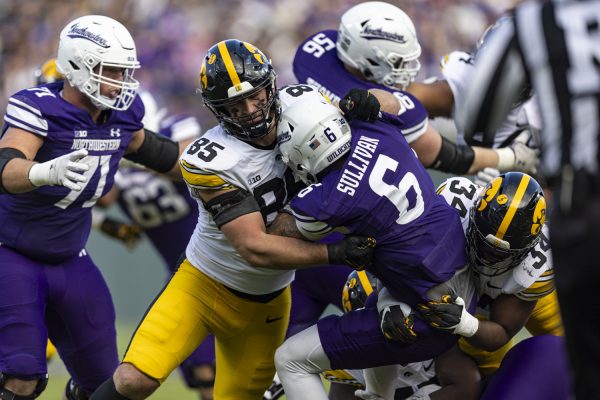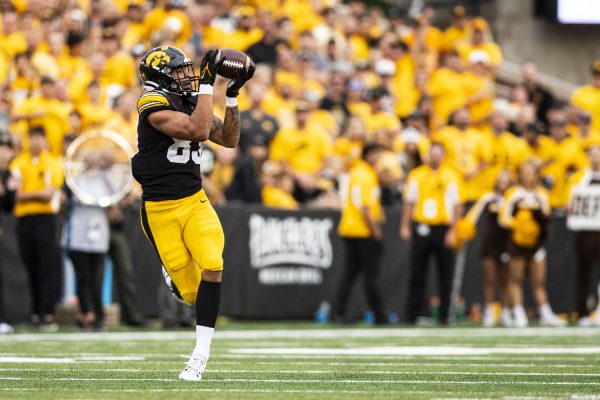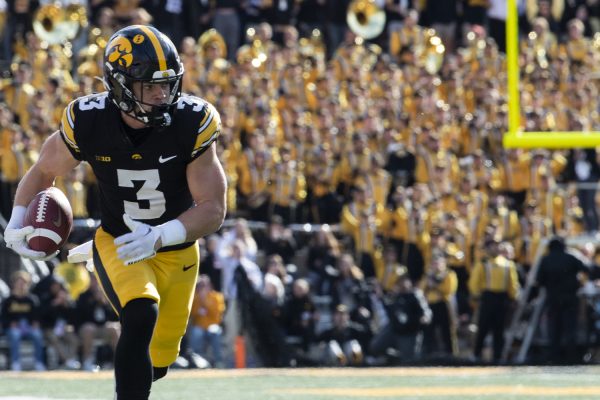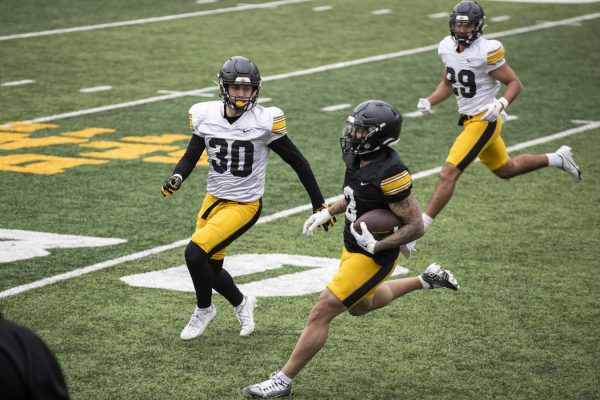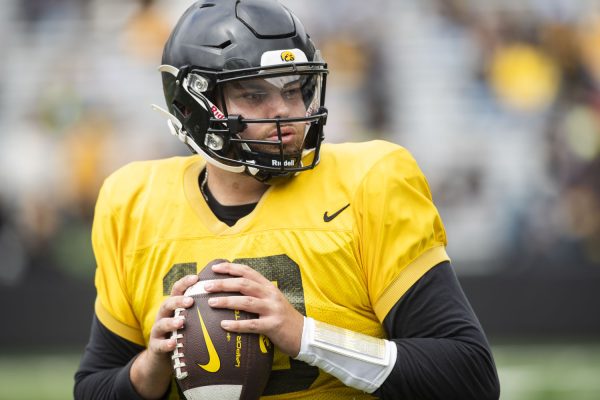Which units have made biggest impact for Iowa’s offense and defense?
DI Pregame Editor Pete Ruden and Assistant Sports Editor Robert Read discuss Iowa’s most productive position groups.
Iowa wide receiver Nico Ragaini catches the ball during a game against Northwestern at Ryan Field on Saturday, October 26, 2019. The Hawkeyes defeated the Wildcats 20-0. Ragiani caught for a total of 4 yards.
October 30, 2019
Offense — wide receivers
What was once the weakest link of the Iowa offense now is its deepest and most impactful unit.
Receiving corps under head coach Kirk Ferentz have — in most cases — not been the go-to threats on offense. Typically, those would include a dominant ground attack or an NFL-caliber tight end to target.
Now, Iowa’s wide receivers are the standouts on what has been a struggling Hawkeye offense.
Juniors Brandon Smith and Ihmir Smith-Marsette are the best of the very deep position group. Smith has proven himself as one of quarterback Nate Stanley’s favorite targets. Standing at 6-2 and possessing the ability to go up and over any defender, Smith is always a threat in the passing game.
Smith-Marsette is a big play waiting to happen. Whether it be a one-handed catch or blazing by the defense for a long touchdown reception, Smith-Marsette brings an electricity to the Iowa offense that the rest of the unit has lacked at times.
Younger players in the receiving corps also contribute to the group’s depth and overall talent.
Redshirt freshmen Nico Ragaini and Tyrone Tracy have each made plays when their numbers have been called upon this season. Ragaini has emerged as a security blanket over the middle of the field for Stanley, while Tracy showcased the danger he presents opposing defenses with on his elusive 50-yard catch-and-run for a touchdown against Northwestern.
Throw in Michigan transfer and Iowa City native Oliver Martin — who has been productive in his limited action on the field this season — and Iowa’s wide receivers are deep, talented, and the most dangerous unit on the Hawkeye offense.
-Robert Read
RELATED: Iowa football’s Goodson shining bright in ground attack
Defense — secondary
If I could choose the whole defense, I would. After all, Iowa ranks third in the nation, giving up just 10.1 points per game.
But I can’t.
So instead, I’ll go with a unit that has been a huge key for the Hawkeyes in recent years and continues to be in 2019: the secondary.
While the entire Iowa defense has impressed this season, the secondary has stood out over the stacked defensive line and consistent linebacker corps.
The Hawkeyes currently sit at No. 12 in passing defense in college football, allowing only 178.1 passing yards per game.
Iowa has held opposing teams to under 150 passing yards in five of its eight games this season, including 47 against Rutgers on Sept. 7.
The only times the Hawkeyes didn’t keep teams under that mark came in the season-opener against Miami (Ohio) and against pass-heavy Iowa State and Purdue squads.
A lot of that is thanks to safety Geno Stone and cornerback Michael Ojemudia.
In the early part of the season — when the secondary was riddled with injury — Stone and Ojemudia served as anchors when the Hawkeyes desperately needed them.
Ojemudia has racked up two interceptions this season, and Stone has one while stringing together plenty of NFL-caliber plays over the past few weeks.
Even when starting cornerback Matt Hankins was forced out of the lineup with an injury, D.J. Johnson grew up fast to help the secondary keep things under control.
And when Riley Moss came back from injury against Purdue, he picked off a pass on his second play in the game.
The secondary is full of playmakers, and it’s shown that throughout the season, no matter the external circumstances.
-Pete Ruden




